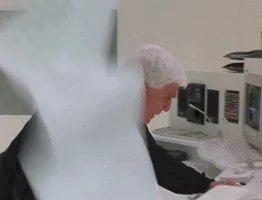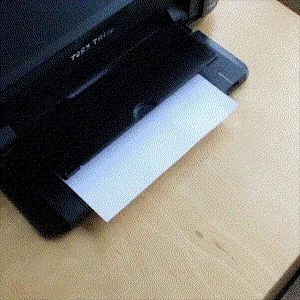Printer
toner linked to genetic changes, health risks in new study
West
Virginia University
According to a
new study by West Virginia University researcher Nancy Lan Guo, the microscopic
toner nanoparticles that waft from laser printers may change our genetic and
metabolic profiles in ways that make disease more likely. Her findings appear
in the International
Journal of Molecular Sciences.
"The
changes are very significant from day one," said Guo, a professor in the
School of Public Health and member of the Cancer Institute.
Guo and her
colleagues placed rat models into the same chamber as a typical laser printer.
The models stayed in the chamber for five hours a day, for 21 days, as the
printer ran nonstop.
"It's
equivalent to an occupational setting," Guo said. "A rat's life
expectancy is about one or two years. In our life, that would be more like four
or eight years of five-hour-a-day exposure."
Periodically,
the researchers assessed the rats' lung cells and blood to see if their genetic
material had changed. The assessments took place every four days for 21 days.
The analysis comprised every gene in the rat genome.
If something
alters a rat's -- or a person's -- genetic material, it can disrupt how cells
make proteins.
And protein production is crucial to life itself. From lugging a load of laundry upstairs, to maintaining a regular heartbeat, "we do everything because certain proteins function in certain ways," Guo said.
And protein production is crucial to life itself. From lugging a load of laundry upstairs, to maintaining a regular heartbeat, "we do everything because certain proteins function in certain ways," Guo said.
She and her team
discovered that a single day of toner-particle exposure was enough to disturb
the activity of genes associated with metabolism, immune response and other
essential biological processes in the rat models.
Overall -- taking into account all 21 days of exposure and testing -- the researchers observed genomic changes linked to cardiovascular, neurological and metabolic disorders.
Overall -- taking into account all 21 days of exposure and testing -- the researchers observed genomic changes linked to cardiovascular, neurological and metabolic disorders.
"I don't
want to alarm people," Guo said, "but special ventilation and
exposure controls should be installed in rooms where laser printers are in
heavy-duty use, because the concentration of nanoparticles released in the air
during the printing and copying process is strongly correlated with the
printing activities.
"In
particular, there is one group I really think should know about this: pregnant
women. Because once a lot of these genes are changed, they get passed on
through the generations. It's not just you."
On the same days
that the researchers assessed the rats' genes, they also measured every
metabolite available in their blood.
Metabolites are
the molecules that emerge as the body digests food and uses it for fuel.
"Let's say
we eat something," Guo said. "Where does the food go? It goes to
metabolites. It gets absorbed. All these metabolites are involved in our
function."
The human body
contains thousands of different metabolites, in fluctuating amounts. Some --
like glucose -- give us energy. Others -- like oleic acid -- help us create
fatty acids.
The metabolic
levels that the researchers detected reinforced their other findings. The same
health risks that the genetic profiles pointed to were implicated by the
metabolic profiles as well.
Building on
these results, Guo and her colleagues have since investigated the genomic
changes that Singaporean printing company workers have experienced.
In many respects, the workers' genomes changed the same ways the rats' genomes did. The results from these workers are included in a manuscript ready for submission to a journal.
In many respects, the workers' genomes changed the same ways the rats' genomes did. The results from these workers are included in a manuscript ready for submission to a journal.
"And
they're very young," Guo said. "A lot of the workers ranged from 20
to their early 30s, and you're already starting to see all of these changes.
"We have to
work, right? Who doesn't have a printer nowadays, either at home or at the
office? But now, if I have a lot to print, I don't use the printer in my
office. I print it in the hallway."

